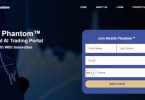The tech industry thrives on innovation and adaptability. For consultants, success comes from aligning strategic goals with technology solutions while managing an ever-evolving roadmap. A structured approach divides this journey into three key steps:
Together, these steps provide a blueprint for navigating the complexities of the tech industry and driving measurable results.
Contents
Step 1: Develop a Vision and Strategy
Every successful consulting engagement begins with a clear strategy that sets the tone for collaboration. Developing a vision is the foundation of this phase, where consultants work closely with clients to articulate objectives such as optimizing digital infrastructure, enhancing customer satisfaction, or increasing operational efficiency. A well-defined vision aligns all stakeholders and ensures clarity of purpose from the start.
Once the vision is established, the focus shifts to measurable goals that provide a clear direction for success. These goals might include:
- Reducing costs
- Improving system uptime
- Accelerating product deployment cycles
By tying these objectives to quantifiable KPIs, consultants create a framework to track progress and validate the impact of their efforts.
Identifying key capabilities rounds out this phase, ensuring that the right skills, tools, and frameworks are in place to achieve the vision. Whether it’s leveraging project management methodologies, analyzing data for insights, or managing organizational change, these capabilities form the bedrock of a successful engagement.
Step 2: Craft a Cohesive Technology Plan
With the vision and goals established, consultants move into designing an enabling operating model (process, people, technology). This summary focuses on the technology strategy phase, which designs an integrated tech stack while leveraging emerging technologies to create tailored solutions that meet client needs. A well-crafted technology plan ensures seamless operations, enhances customer experiences, and builds a scalable foundation for future innovation.
An effective technology strategy starts with a robust infrastructure that supports operational goals. Key components include:
- Integrated tech stack – Ensuring that CRM platforms, SaaS solutions, and application modernization efforts work in unison to enhance efficiency.
- Interoperability frameworks – APIs and middleware that facilitate smooth data exchange between systems.
- Advanced security protocols – Implementing zero-trust models, encryption, and monitoring tools to protect sensitive information.
- Cloud infrastructure – Leveraging AWS, Azure, or Google Cloud for scalable and resilient operations.
By strategically incorporating AI, machine learning, and cloud computing, consultants can future-proof client systems. AI-driven insights optimize decision-making, while blockchain and IoT enhance security and real-time analytics. A comprehensive technology plan ensures businesses remain agile and competitive in an evolving landscape.
Step 3: Build an Actionable Roadmap
The final step transforms vision and strategy into a structured, phased plan for execution. A well-defined roadmap provides clarity and direction, ensuring that short-term actions align with long-term transformational goals. By prioritizing early wins and foundational improvements, organizations gain momentum and set the stage for sustained growth.
A successful roadmap incorporates key implementation phases, including:
- Quick wins – Automating routine tasks and resolving immediate inefficiencies to demonstrate immediate value.
- Foundational changes – Implementing cloud migration and system integrations to create a scalable platform.
- Long-term transformation – Deploying AI-driven analytics and full-stack modernization for continued innovation.
Agile methodologies, such as the Scaled Agile Framework (SAFe), enable flexibility and collaboration. Agile Release Trains (ARTs) align teams, while continuous delivery pipelines accelerate value realization. Monitoring key performance metrics—such as cost savings, system reliability, and customer satisfaction—ensures the roadmap remains on track. By embedding sustainability through training and best practices, clients are empowered to maintain long-term success beyond initial implementation.
Drive Success with Structured Consulting
Success in the tech industry requires a blend of strategic planning, technology expertise, and actionable execution. By developing a vision, crafting a robust technology strategy that leverages the Integrated Tech Stack and emerging technologies, and delivering through an Agile roadmap, consultants can consistently deliver transformative results. This structured approach positions you as a trusted advisor, ready to navigate the complexities of the tech industry and drive meaningful change for your clients.
About the Author
Jaik Balakumar is a Management and Technology Consultant based in Greater Chicago with over 20 years of experience, consistently earning top ratings within the Big Four consulting firms. Known for his strong work ethic, he has supported 50+ companies, domestically and globally.







